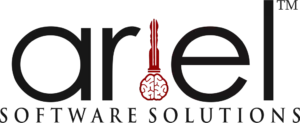In the modern digital era, businesses are rapidly shifting toward automation and AI-driven solutions to optimize their workforce management system. Managing employees efficiently while ensuring accuracy, compliance, and security is critical to operational success. Traditional methods such as manual timesheets and RFID-based attendance software are prone to errors, time theft, and security vulnerabilities. The next generation of workforce management systems is powered by geolocation tracking and biometric authentication, offering businesses a robust and automated solution to streamline operations.
With the integration of AI, geospatial technology, and biometric security, a workforce management system evolves into an intelligent platform that improves efficiency, transparency, and workforce optimization. This blog delves into the technical aspects, implementation strategies, and benefits of geolocation and biometric solutions in time and attendance software.
The Evolution of Workforce Management Technology
Traditional workforce management systems relied on physical attendance tracking, punch cards, and spreadsheet-based scheduling, which are prone to manipulation and inefficiencies. With advancements in cloud computing, IoT, and artificial intelligence, organizations now have access to smart, scalable, and data-driven time and attendance software.
One revolutionary system is geolocation tracking combined with biometric authentication, which enables businesses to implement precise tracking, enhanced security, and seamless automation in workforce operations. As organizations adopt hybrid and remote work models, these technologies are becoming crucial for monitoring workforce productivity and compliance.
How Geolocation Technology Powers Workforce Management
- 1. GPS and Geofencing for Real-Time Employee Tracking
Geolocation technology utilizes GPS, Wi-Fi, and cellular networks to pinpoint an employee’s location with precision. Businesses can implement geofencing, a virtual boundary that automates clock-in and clock-out processes when employees enter or leave predefined areas.
Key Technical Components:
- GPS-Based Location Tracking: Uses satellite networks to determine precise employee locations.
- Geofencing: Establishes digital perimeters around work zones to automate attendance software records.
- Wi-Fi and Bluetooth Proximity: Enhances indoor tracking accuracy where GPS signals are weak.
- Mobile Integration: Employees’ devices sync with cloud-based workforce management systems for real-time updates.
Benefits of Geolocation-Based Workforce Management:
- Accurate Attendance Logging: Eliminates manual errors and false attendance entries.
- Optimized Field Workforce Allocation: Enables dynamic task assignment based on real-time location.
- Enhanced Compliance: Ensures labor law adherence with automated working hours tracking.
- Reduced Operational Costs: Minimizes administrative overhead associated with manual tracking.
- 2. Geolocation-Based Productivity Enhancement
Beyond attendance tracking, geolocation data can help businesses analyze work patterns, detect inefficiencies, and optimize operations. AI-driven geolocation insights allow businesses to:
- Reduce travel time by dynamically assigning tasks based on employee location.
- Monitor idle time and ensure employees are present in designated work zones.
- Improve emergency response times by tracking workforce distribution.
Biometric Authentication: Reinventing Workforce Security and Access Control
- 1. Biometric Solutions in Workforce Management
Biometric authentication leverages unique physical and behavioral characteristics to verify employee identity, ensuring secure and foolproof attendance records within a workforce management system.
Types of Biometric Authentication Used in Workforce Management:
- Fingerprint Scanning: Captures unique fingerprint patterns to authenticate employees.
- Facial Recognition: AI-powered algorithms analyze facial structures for verification.
- Iris Scanning: Uses high-resolution imaging to recognize distinct iris patterns.
- Voice Recognition: Analyzes voice frequencies and patterns for identity verification.
- 2. How Biometric Authentication Enhances Workforce Operations
- Eliminates Proxy Attendance: Prevents employees from logging in on behalf of others.
- Secures Work Environments: Restricts unauthorized access to sensitive areas.
- Seamless Payroll Integration: Automates salary calculations based on verified work hours.
- Frictionless User Experience: Eliminates the need for ID cards, PINs, or passwords.
The Power of AI-Driven Workforce Management: Geolocation Meets Biometrics
The true potential of geolocation and biometric authentication is unlocked when they are integrated into a single AI-powered workforce management system. AI algorithms analyze employee behavior, location data, and work patterns to offer actionable insights for optimizing workforce operations.
AI-Powered Features That Enhance Workforce Efficiency:
- Automated Scheduling & Resource Allocation: AI-driven decision-making assigns tasks dynamically.
- Predictive Workforce Analytics: Identifies inefficiencies and suggests operational improvements.
- Real-Time Fraud Detection: Flags suspicious activity, such as unauthorized access attempts.
- Adaptive Payroll Processing: Ensures compliance with labor laws while automating payroll management.
- Smart Alerts & Notifications: AI-driven alerts notify managers of workforce anomalies, such as excessive overtime or absenteeism.
Overcoming Challenges in Adopting Geolocation and Biometric Solutions
- 1. Addressing Privacy Concerns
Many employees have privacy concerns when it comes to location tracking and biometric authentication. Implementing secure encryption, role-based access, and GDPR-compliant policies can help mitigate these concerns.
- 2. Ensuring Scalability and System Compatibility
Businesses should opt for cloud-based, API-driven workforce management systems that integrate seamlessly with existing time and attendance software, payroll, and security systems.
- 3. Managing Infrastructure and Implementation Costs
While initial implementation may require investment in hardware (biometric scanners) and software (AI-driven tracking systems), long-term benefits such as reduced fraud, optimized labor costs, and enhanced security outweigh the costs.
Case Studies: Real-World Applications of Workforce Management Systems
- 1. Construction Industry
Large-scale construction firms use geolocation tracking to monitor workforce distribution across multiple sites. Time and attendance software ensures that only authorized personnel enter high-risk zones, improving safety and compliance.
- 2. Healthcare Sector
Hospitals leverage attendance software to manage shift schedules and prevent fatigue-related errors. Geolocation technology helps allocate emergency response teams efficiently.
- 3. Logistics and Supply Chain
Fleet management solutions integrate GPS tracking with biometric authentication for driver identity verification, reducing fraud and optimizing delivery routes.
- 4. Retail and Hospitality
Retail chains use facial recognition-based attendance software to track employee work hours accurately, reducing payroll discrepancies and improving customer service through efficient staff allocation.
Future Trends in Workforce Management Technology
- AI-Driven Predictive Analytics: Workforce data insights for better decision-making.
- Blockchain for Secure Identity Management: Decentralized employee records to prevent data breaches.
- 5G and IoT Integration: Real-time workforce tracking with ultra-fast connectivity.
- Wearable Biometric Devices: Smartwatches and wearables for continuous authentication.
- Hybrid Work Optimization: AI-driven geolocation and biometrics enhance remote work compliance.
Conclusion

The future of workforce management systems is AI-powered, geolocation-based, and biometric-driven. By integrating these advanced technologies, businesses can streamline operations, enhance security, prevent fraudulent attendance practices, and improve employee efficiency.
At Ariel Software Solutions, we specialize in developing cutting-edge workforce management systems tailored to modern business needs. Whether you need AI-driven scheduling, secure biometric authentication, or real-time geolocation tracking, we have the expertise to revolutionize your workforce operations.
Get in touch with us today to explore the future of workforce management!








